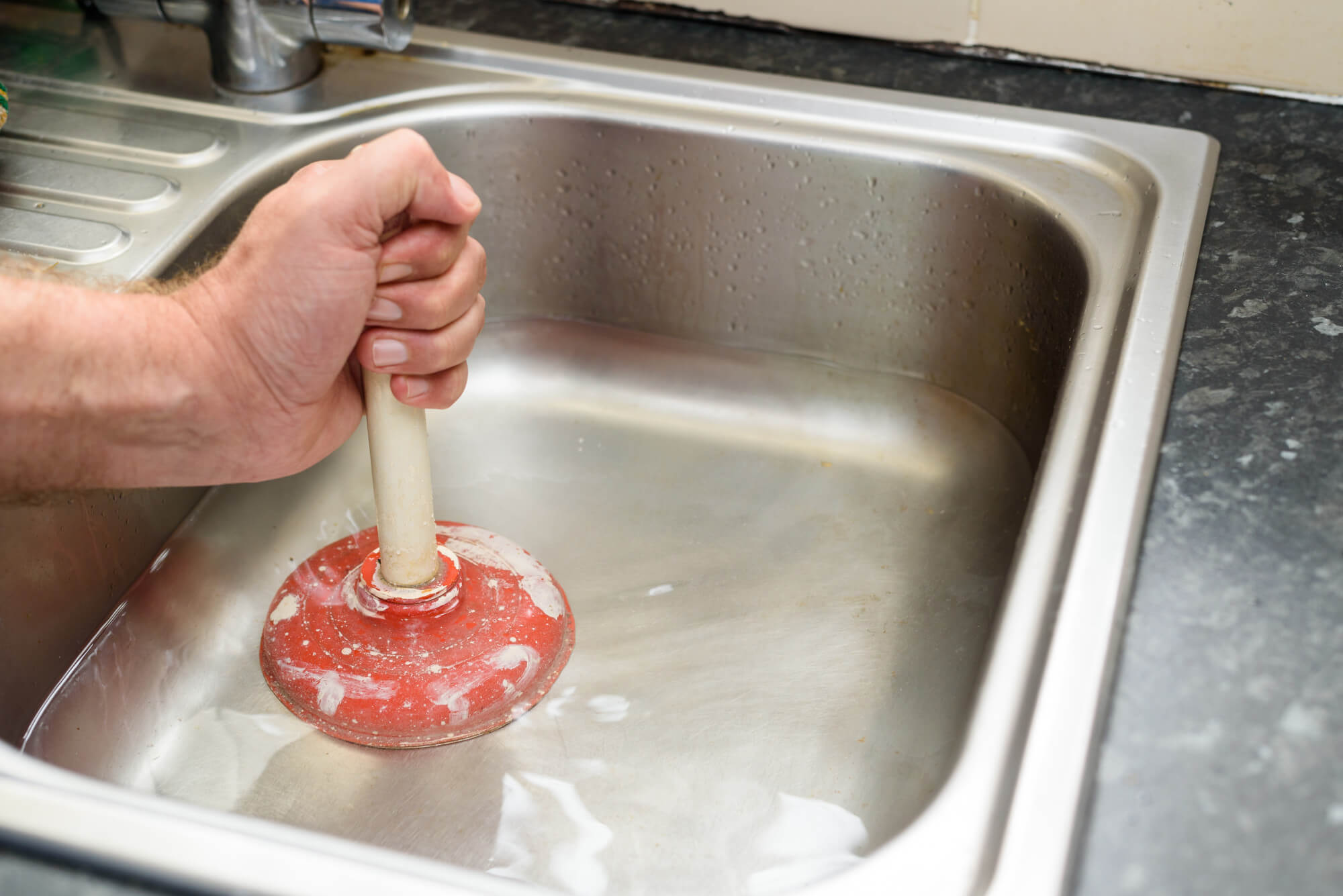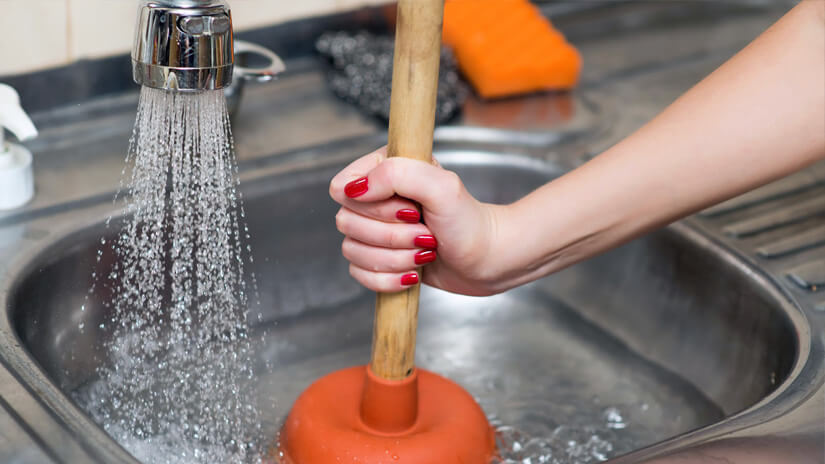Advice for Unclogging a Blocked Drain Before Consulting Plumbing Experts
Advice for Unclogging a Blocked Drain Before Consulting Plumbing Experts
Blog Article
What are your thoughts and feelings about How to handle a clogged drain in your home?

Introduction
Dealing with a blocked drainpipe can be an irritating experience, disrupting day-to-day tasks and potentially triggering damage to your residential property. Nonetheless, before reaching out to pipes specialists, there are actions you can take to attend to the issue on your own. In this overview, we'll explore DIY options and preventive measures to tackle a blocked drain successfully.
Determining the Problem
The very first step in resolving a blocked drainpipe is identifying the indications. Sluggish drainage, gurgling sounds, foul odors emanating from drains pipes, or water support up prevail signs of an obstructed drainpipe. Recognizing these signs early can aid stop further problems.
Typical Root Causes Of Blocked Drainpipes
Comprehending the factors that contribute to drain obstructions is essential for effective resolution. Usual wrongdoers consist of hair, soap residue, grease, food debris, and international things like sanitary products or paper towels. Tree roots getting into underground pipelines can likewise trigger substantial obstructions.
DIY Solutions
For small blockages, a number of do it yourself remedies can be reliable. Pouring boiling thin down the drain can aid liquify grease and debris. Sodium bicarbonate and vinegar or a combination of salt and cooking soft drink can serve as all-natural cleansers. Using a bettor or pipes serpent to remove obstructions is an additional alternative.
Tools and Tools
Having the right devices accessible can make DIY drain cleaning a lot more reliable. A bettor is a functional device for getting rid of obstructions in sinks, toilets, and showers. A pipes serpent or auger can reach much deeper obstructions, while drainpipe cleansing chemicals can be made use of carefully for persistent blockages.
Preventive Measures
To prevent future blockages, taking on safety nets is vital. Mount drain guards or strainers to catch hair and particles before they get in the pipes. Routinely flush drains with hot water to liquify oil accumulation, and prevent disposing of grease or solid waste down the tubes.
When to Call an Expert
While do it yourself services can fix minor clogs, certain indicators suggest the demand for professional support. Consistent clogs, foul odors in spite of cleaning up efforts, or several drains supporting all at once are red flags that warrant expert treatment.
Choosing the Right Plumbing Solution
When selecting a pipes solution, take into consideration elements such as experience, licensing, and consumer evaluations. Pick a trustworthy plumbing technician with a performance history of high quality craftsmanship and clear prices methods.
Cost Factors to consider
The expense of expert drain cleaning company can differ depending on the intensity of the clog and the plumber's prices. Demand quotes from multiple suppliers and ask about any kind of additional charges to guarantee transparency and prevent shocks.
Safety Measures
When attempting do it yourself drainpipe cleaning, prioritize safety. Put on protective handwear covers and eyewear to avoid contact with unsafe chemicals or microorganisms. Never ever blend different drain cleaning items, as this can generate unsafe fumes.
Instance Researches
Real-life instances show the efficiency of DIY options and the value of timely professional treatment in solving drainpipe clogs.
Final thought
By adhering to the ideas outlined in this guide, you can properly deal with obstructed drains and stop future pipes problems. Whether selecting do it yourself options or looking for professional help, timely action is essential to keeping a healthy plumbing system and protecting the stability of your home.
How to Clear a Clogged Drain Yourself (And When to Call In the Professionals)
What Can Clog a Drain
Dirt Skin flakes Hair Grease Soap scum Food Offset pipes Tree roots Small objects Mineral buildup DIY Tricks to Unclog a Drain
You can fix this! Once you have identified the source of the clog (or have a vague idea), you can try one or a combination of these fixes in order to clear your plumbing.
Wire Hanger or Snake
Untangle and clear out hair from a drainpipe with a homemade snake. Use a straightened-out wire hanger with a 90-degree angle hook to locate the clog and drag out any unwanted material.
Remember not to push the clog further down to where the wire hanger cannot reach! If you need to follow up with a plunger, give it a try. Your efforts might be more successful after it’s been wire-snaked.
If you want to get fancy and don’t have a wire hanger to spare, head to the store and pick up a hand-operated drain snake. You can get one for $10-$30. It may save you the hassle, and provide additional length to reach deep into the clogged pipe.
Plunger
A cup plunger has a suction cup attached to a wooden handle. The rubber creates a seal around the drain, and increases the pressure force of the plunger.
Plunge for 30-second increments to loosen the clog. This may need to be repeated over the course of 15-20 minutes. Once plunged, run the water to flush the remaining material out of the drain.
Remember– never use a plunger if you have used a chemical drain cleaner. These chemicals can splash up from the force of the plunger and cause serious injury or burns.
Boiling Water
Hot water can sometimes break up materials into a flushable amount. Dirt, grease, and soap buildup requires heat in order to unstick from surfaces.
Take your kitchen kettle and heat your water to a boil. Once it reaches a rolling boil, pour it directly down the drain into the blockage. Carefully follow with plunging, if necessary.
Don’t worry if this takes more than one try! It can often take multiple kettles and repeated plunging in order to clear a particularly stubborn clog.
Chemical Drain Cleaner
As a last resort, pick up a bottle of chemical drain cleaner. Drain-cleaning chemicals are potent, and not very good for the environment.
You may need to wear protective eyewear in gloves before handling your bottle of chemical drain cleaner. Follow the instructions printed on the bottle, and flush with water as soon as the instructions allow. Do not follow with plunging.
Baking Soda and Vinegar
As a safer alternative to chemical drain cleaner, baking soda and vinegar can create a chemical reaction that clears tough clogs.
Combine one cup of cleaning vinegar with one cup of boiling water, and set aside. Once you have done this, pour half a cup of baking soda down the drain. Give the baking thirty seconds to settle and cover a large portion of the problem drain.
Following the baking soda, pour down your vinegar and hot water solution. Once the vinegar and baking soda combine, the mixture will bubble and fix. Let this reaction fizzle in the drain for about an hour.
After an hour, follow with a kettle’s worth of hot water. The heat and liquid should flush out any remaining material.
When to Call a Plumber
If your DIY attempts haven’t cleared your clog drain, it’s time to call in a professional. It’s not worth losing access to your kitchen sink or high-traffic bathroom. A clog in a vital area can keep you from the things you’d rather be doing, and derail your routine.
Anytime a clog is causing water to spread is a time to call in a plumbing service. What starts out as a little bit of water can quickly grow into serious, expensive water damage.
Additionally, a serious clog can result in burst pipes or serious leaks. Make sure you know when to take it seriously!
https://myguysnow.com/how-to-clear-a-clogged-drain-yourself-and-when-to-call-in-the-professionals/

As an enthusiastic person who reads about Tips for Dealing with Clogged Drains and Sewer Lines, I assumed sharing that excerpt was worth the trouble. Are you aware of another individual who is in to Tips for Dealing with Clogged Drains and Sewer Lines? Be sure share it. I value reading our article about .
Click Here Report this page